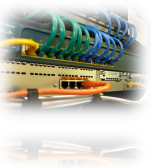Link-State Protocols
 Weeks ago and maybe months :), I talked about distance vector protocols and with that you probably got the feeling that when using a distance vector protocol it does not give a full network graphical representation of the entire network. Only the directly connected routes can't remember? Check out this post Distance Vector Routing.
Weeks ago and maybe months :), I talked about distance vector protocols and with that you probably got the feeling that when using a distance vector protocol it does not give a full network graphical representation of the entire network. Only the directly connected routes can't remember? Check out this post Distance Vector Routing.



